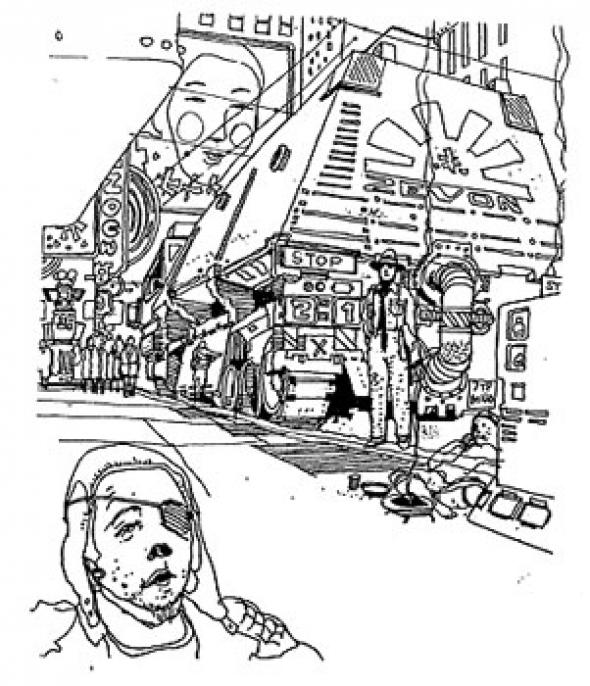Back to the Future
Lev Manovich on Blade Runner and the Graphical User Interface
In 1984 the director of Blade Runner, Ridley Scott, was hired to create a commercial which introduced Apple Computer’s new Macintosh. In retrospect, this event is full of historical significance. Released within two years of each other, Blade Runner (1982) and the Macintosh computer (1984) defined the two aesthetics which, twenty years on, still rule contemporary culture. One was a futuristic dystopia which combined computer technology and fetishism, futurism and decay, retro-styling and urbanism, Los Angeles and Tokyo. Since Blade Runner’s release, its techno-noir was replayed in countless films, computer games, novels and other cultural objects. And while a number of strong aesthetic systems have been articulated in the following decades, both by individual artists (Mathew Barney, Mariko Mori) and by commercial culture at large (the 1980s ‘post-modern’ pastiche, the 1990s techno-minimalism), none of them was able to challenge the hold of Blade Runner on our vision of the future.
In contrast to the dark, decayed, ‘post-modern’ vision of Blade Runner, the Graphical User Interface (GUI) popularised by Macintosh remained true to the modernist values of clarity and functionality. The user’s screen was ruled by straight lines and rectangular windows which contained smaller rectangles of individual files arranged in a grid. The computer communicated with the user via rectangular boxes containing clean black type rendered against a white background. Subsequent versions of the GUI added colours and made it possible for users to customise the appearance of many interface elements, thus somewhat diluting the sterility and boldness of the original monochrome 1984 version. Yet its original aesthetic has lived on in the displays of hand-held communicators such as the Palm Pilot, cellular telephones, car navigation systems and other consumer electronic products which use small LCD displays comparable in quality to the 1984 Macintosh screen.
Like Blade Runner, Macintosh’s GUI articulated a vision of the future, albeit a very different one. In this vision, the lines between humans and their technological creations (computers, androids) are clearly drawn and decay is not tolerated. In the computer, once a file is created, it never disappears except when explicitly deleted by the user. And even then deleted items can usually be recovered. Thus, if in ‘meatspace’ we have to work to remember, in cyberspace we have to work to forget. (Of course while they run, OS and applications constantly create, write to and erase various temporary files, as well as swap data between RAM and virtual memory files on a hard drive, but most of this activity remains invisible to the user.)
Also like Blade Runner, the GUI vision also came to influence many other areas of culture. This influence ranges from purely graphical (for instance, the use of GUI elements by print and TV designers) to the more conceptual. In the 1990s, as the Internet progressively grew in popularity, the role of a digital computer shifted from being a specific technological tool (a calculator, a symbol processor, an image manipulator, etc.) to being a filter to all culture, a form through which all kinds of cultural and artistic production is mediated. As Web browser windows come to replace cinema and television screens, art gallery walls, libraries and books, all at once, the new situation manifests itself: all culture, past and present, is being filtered through a computer, with its particular human-computer interface.
Today, we are in a new century, a new millinium — and yet, aesthetically, we are still living in the era which was articulated almost twenty years ago by Blade Runner and Macintosh’s GUI. We still have not left the twentieth century. But, hopefully, we do not have to wait for long.
Lev Manovich <manovichATucsd.edu>
Mute Books Orders
For Mute Books distribution contact Anagram Books
contact@anagrambooks.com
For online purchases visit anagrambooks.com








